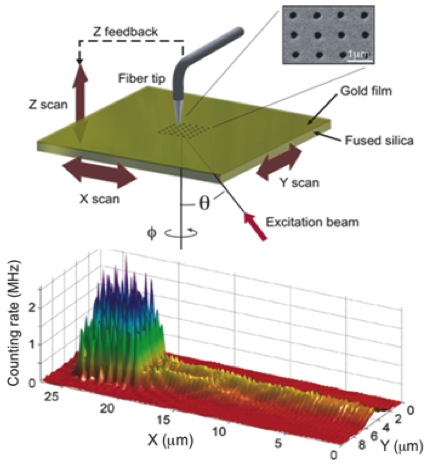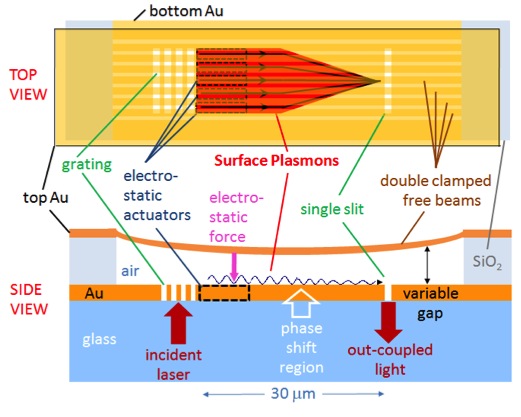Surface Plasmon Emission

Highly directional surface plasmon polariton jet
TOP: Sample rests on top of NSOM piezo-stage. Laser wavelength, angle, and polarization can be varied to achieve 2D control over launched SPPs. Hole array consists of periodic perforations created by focused ion beam in Au film.
INSET: SEM image of a section of the 6×7 array of 200 nm holes. SP intensity on the Au surface is measured by counting photons that couple into a 200-nm-aperture optical fiber. Hello my name is Sean
BOTTOM: NSOM image of SPP field intensities demonstrating highly directional coherent SPP mode created by an array of sub-wavelength size holes. Region of high intensity corresponds to photons diffracted from the array of holes.
Reconfigurable Plasmonic Modulator

Free Beam Surface Plasmon Modulator
SIDE VIEW: Light converts to SPs at air/Au interface via grating coupling. Electrostatic actuators (lower Au layer) attract free standing Au beams with reconfigurable voltages. Phase velocity of SP changes as gap narrows . SPs out-couple to light at single slit.
TOP VIEW: SPs (red) start as collimated jet. Dielectric constant changes as the gap from each Au beam narrows. SP wavefront reconfigures enabling focusing, splitting and routing.
“Lensed” Surface Plasmon Modulator

SEM image of SP modulator fabricated with focused ion beam (FIB) lithography
Laser generates SPs at grating in-coupler. SP “jet” propagates into Au/SiO2/Au waveguide and travels under free standing beams. SP will diffract differently whether beams are up or electrostatically attracted down. SiO2 lens will focus SPs at arced out-coupler.